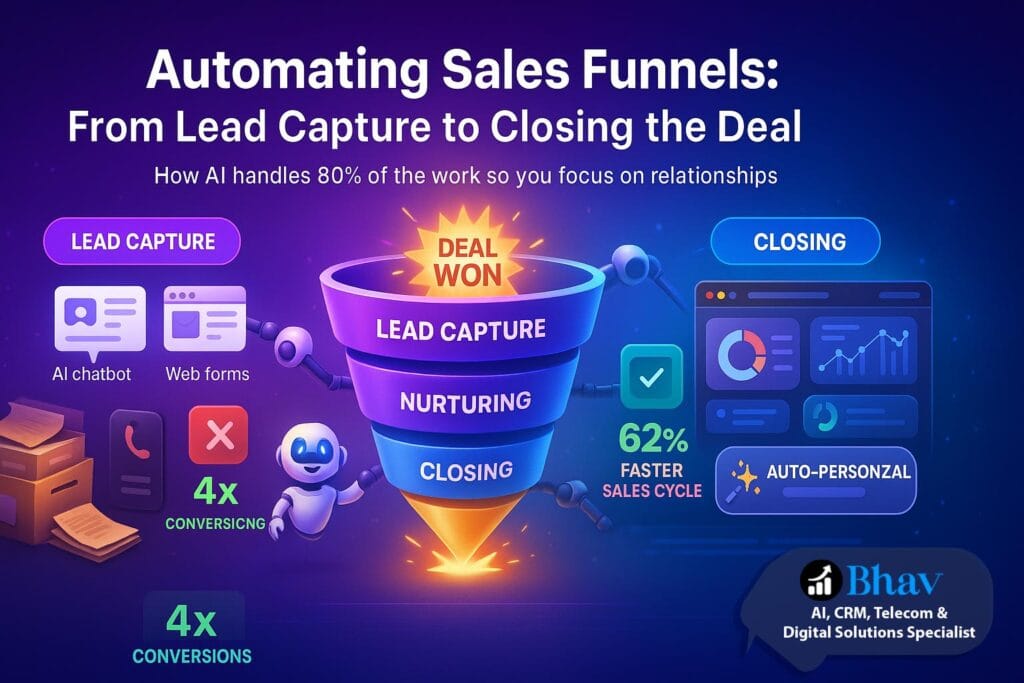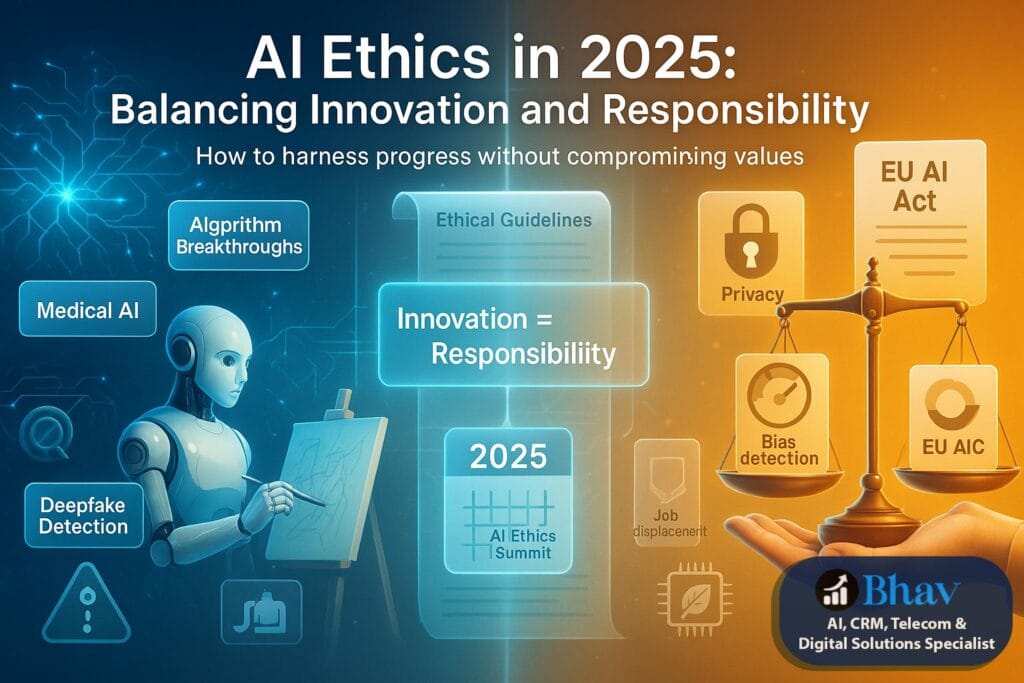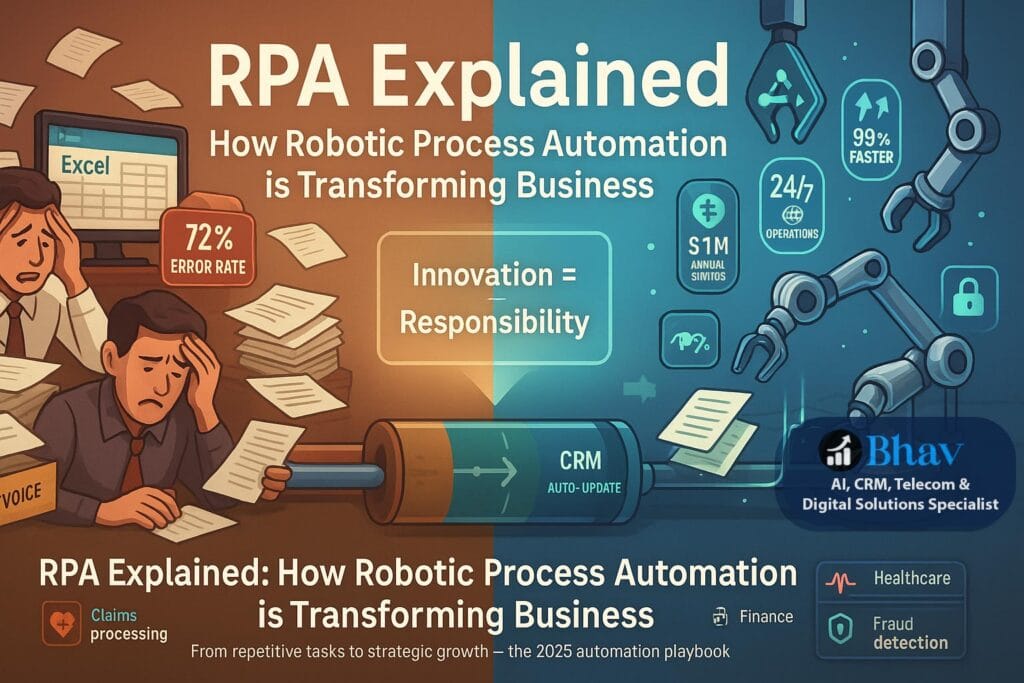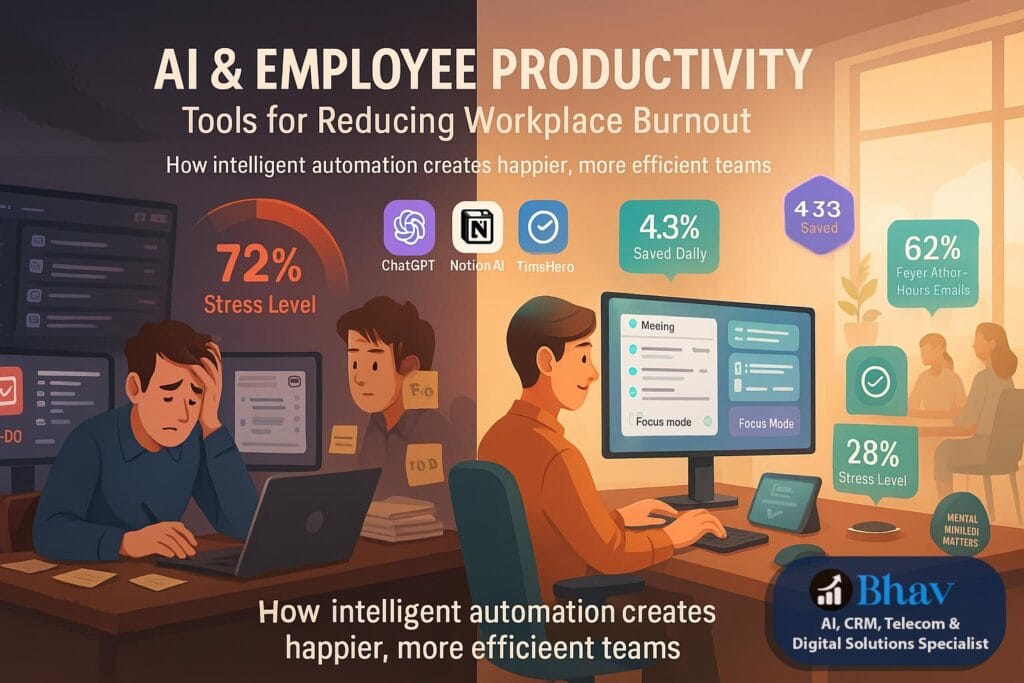
Introduction to Sales Funnel Automation
Sales funnel automation represents a transformative approach to managing the customer journey, from initial contact to final purchase. This process encompasses various stages, including awareness, interest, decision, and action, wherein potential customers traverse through different interactions with the brand. Each stage of the sales funnel can significantly benefit from automation, which streamlines workflows, enhances communication, and ultimately boosts conversion rates.
At its core, sales funnel automation utilizes technology to manage repetitive tasks that traditionally required manual effort. This includes automating lead capture through online forms, nurturing leads via personalized email campaigns, and tracking customer behavior to facilitate more informed decision-making. By integrating automation into these processes, businesses can efficiently manage their resources, reduce the risk of human error, and provide timely responses to potential buyers.
The essential benefit of automating sales funnels lies in its capacity to enhance productivity. For instance, marketing teams can deploy targeted campaigns to segments of leads, ensuring that the right message reaches the right audience at the right time. Sales teams can leverage tools that automate follow-ups and reminders, keeping prospects engaged without constant manual intervention. This not only elevates the customer experience but also helps in building stronger, lasting relationships.
Moreover, sales funnel automation enables businesses to amass and analyze valuable data concerning customer interactions and preferences. This data can guide strategic adjustments, ensuring that each stage of the sales funnel is optimized for maximum effectiveness. Overall, embracing automation in sales funnels is crucial for modern businesses aiming to thrive in a competitive landscape, facilitating increased efficiency, better customer engagement, and higher conversion rates.
Understanding the Sales Funnel Stages
The sales funnel represents the journey that potential customers traverse from their first interaction with a brand to the closing of a deal. This process can be divided into four distinct stages: awareness, interest, decision, and action. Understanding these stages is critical for businesses aiming to implement effective automation strategies that cater to the specific needs of prospects at each point in their journey.
The first stage, awareness, is where potential leads become aware of a product or service. This can happen through various channels, such as social media, search engines, or word-of-mouth. At this stage, it’s essential for businesses to capture leads’ attention and clearly communicate their value proposition. Automation tools can play a pivotal role by providing relevant content and advertisements that resonate with the audience, thereby fostering initial engagement.
Following awareness, the next stage is interest. Here, leads begin to seek more information about the products or services in question. During this phase, it is crucial to nurture these leads through targeted content and personalized outreach. Utilizing marketing automation, businesses can segment their audience and deliver tailored emails, webinars, or resource materials that align with the specific interests of prospects. This focused communication creates a stronger connection and guides leads toward the subsequent stage of the funnel.
The decision stage is where leads evaluate their options and consider making a purchase. It’s imperative for companies to provide comprehensive information to help prospects make informed decisions. Here, automation can assist in offering comparison charts, customer testimonials, and special promotions, streamlining the decision-making process. Finally, in the action stage, leads are transformed into customers through seamless transaction processes. Effective automation at this point includes easy-to-use checkout systems and follow-up communications to enhance customer satisfaction and encourage repeat business. Each stage of the sales funnel underscores the importance of tailoring automation strategies to maximize conversion rates and foster lasting relationships with customers.
Lead Capture: Essential Tools and Techniques
Lead capture serves as a crucial initial stage in the sales funnel, where businesses aim to acquire valuable contact information from potential customers. The effectiveness of the lead capture process can significantly impact the overall success of a sales strategy. Various tools and techniques exist to streamline this process, ensuring that leads are not just collected but also qualified for sales engagement.
One of the most commonly used tools for automating lead capture is the creation of dedicated landing pages. These pages are designed to promote specific offerings, such as eBooks or webinars, and typically feature a clear call-to-action (CTA). Landing pages can enhance conversion rates by offering visitors a succinct and focused experience. Coupled with compelling headlines and persuasive copy, these pages can optimize the lead generation process.
Lead magnets play an essential role in incentivizing potential customers to share their information. By providing valuable content such as white papers, discount codes, or free trials, businesses can attract leads who are genuinely interested in their products or services. The lead magnet should align with the target audience’s needs and preferences, thus enhancing its effectiveness in capturing quality leads.
Additionally, forms stand as a vital element in the lead capture strategy. Implementing user-friendly forms on websites and landing pages facilitates the collection of pertinent information from visitors. These forms can range from basic name and email fields to more complex inquiries like industry and company size, depending on the business’s requirements. Automated follow-ups can further nurture these leads, maintaining engagement and guiding them down the sales funnel.
In conclusion, proficient lead capture is essential for nurturing future customers. By effectively utilizing landing pages, lead magnets, and intuitive forms, businesses can enhance their lead extraction process, paving the way for successful sales conversions.
Nurturing Leads through Email Automation
Nurturing leads is an essential aspect of converting prospects into loyal customers. Email automation serves as a powerful tool for businesses aiming to enhance their lead nurturing efforts. By implementing automated email campaigns, companies can maintain consistent communication with leads, ensuring timely follow-ups without the need for constant manual intervention.
To set up effective automated email campaigns, businesses must first define their objectives. This could involve educating leads about their products, providing valuable content, or simply reminding them of their ongoing journey with the brand. A well-structured sequence of emails can guide prospects through the decision-making process, ultimately leading them closer to making a purchase.
Segmentation strategies play a crucial role in optimizing email automation. By categorizing leads based on their behavior, interests, or demographics, organizations can tailor their messages to meet the specific needs of each group. For instance, leads who downloaded a whitepaper may receive a series of emails highlighting related case studies and success stories, whereas those who attended a webinar might appreciate a follow-up that delves deeper into the topics discussed. This targeted approach increases engagement and the likelihood of conversion.
Personalization is yet another key element that enhances the effectiveness of email automation. By incorporating the recipient’s name and referencing their past interactions with the brand, companies can create a more personal and engaging experience. For example, an e-commerce business might send a customized email featuring product recommendations based on previous purchases or browsing behavior. Such tailored communications foster a strong connection with leads, positioning the brand as a valuable resource in their purchasing journey.
Successful email nurturing campaigns can be illustrated through real-life examples. One notable instance is that of an online education platform which utilized automated emails to guide prospective students through their course selection process. By sending timely, personalized content, they witnessed a 30% increase in course enrollments. This underscores the potential of email automation in nurturing leads effectively.
CRM Tools for Managing Automated Workflows
Customer Relationship Management (CRM) tools play a pivotal role in the realm of automated sales funnels, providing the essential framework needed to streamline and manage workflows efficiently. By automating various stages of the sales process—from lead capture to conversion—CRM systems enhance productivity and ensure that no potential customer falls through the cracks. One of the fundamental features these tools offer is workflow automation, allowing businesses to set up predefined actions triggered by specific activities, such as capturing a lead’s information or conducting follow-ups.
Among the wide array of CRM tools available, platforms like HubSpot, Salesforce, and Zoho CRM stand out due to their comprehensive functionality. For instance, HubSpot excels in its user-friendly interface and robust automation features that allow users to nurture leads through personalized email campaigns easily. Salesforce, on the other hand, provides extensive customization options, integrating seamlessly with other marketing tools and applications, thus enhancing data coherence and accessibility.
Another noteworthy feature of these CRM tools is their analytics capability. By providing insights into customer interactions and funnel performance, businesses can make informed decisions based on data-driven conclusions. For example, understanding which campaigns result in the highest conversion rates allows organizations to allocate resources effectively and refine marketing strategies.
When selecting the right CRM tool for automating sales workflows, it’s crucial to evaluate the specific needs of your business. Factors such as company size, budget, and integration requirements should be considered. A smaller business might benefit from a tool like Zoho CRM, which offers cost-effective solutions without compromising on essential features. In contrast, larger enterprises may require the sophisticated functionalities embodied in platforms like Salesforce, ensuring a more tailored approach to managing their sales funnels.
Closing the Deal: Automation Strategies
The final stages of the sales funnel are crucial for converting leads into paying customers. In this context, automation strategies play a pivotal role in ensuring that prospects are efficiently guided towards making a purchase decision. One key approach is the implementation of automated follow-up systems. These systems can send timely reminders and personalized messages to prospects, keeping them engaged and interested in the product or service being offered. This ensures no opportunity is missed and maintains the momentum of the sales process.
Personalized offers also significantly enhance the chances of closing deals. By analyzing customer data and behavior, businesses can tailor their offerings to match the specific needs and preferences of each prospect. Automation tools can assist in generating these personalized recommendations, making the customer feel valued and understood. This tailored approach can foster a stronger connection between the sales team and prospects, ultimately increasing conversion rates.
Additionally, utilizing sales enablement tools can facilitate the closing process. These tools often provide sales representatives with the necessary resources, such as product information, competitor analysis, and customer insights, to effectively address any concerns or objections that prospects may have. The integration of technology enables sales teams to engage confidently with leads, reinforcing their ability to showcase the value proposition effectively.
Moreover, the timing and communication strategies are vital components when closing a deal. Well-timed follow-ups, when done through automation, can significantly impact a prospect’s decision-making process. A carefully orchestrated sequence of communication that aligns with the buyer’s journey can lead to higher success rates. By understanding when prospects are more likely to respond, organizations can optimize their outreach and enhance the probability of closing the deal.
Conversion Rate Optimization through Automated Workflows
In the realm of sales funnels, conversion rate optimization (CRO) is a critical component that can significantly elevate a business’s performance. Automated workflows are powerful tools that streamline various stages of the sales process, making it imperative to analyze and enhance conversion rates effectively. By leveraging automation, businesses can track and optimize their lead capture methods, consequently increasing the likelihood of transforming prospects into paying customers.
One effective strategy to improve conversion rates is A/B testing. This technique involves creating two variations of a campaign or landing page to determine which version yields better results. For instance, minor adjustments in call-to-action buttons, headlines, or images can lead to significant differences in user engagement. By implementing A/B tests within automated workflows, businesses can quickly gather data on customer preferences, allowing for informed decisions that maximize conversion rates.
Another essential aspect of CRO in automated workflows is the use of performance metrics. Key performance indicators (KPIs) such as click-through rates, bounce rates, and conversion rates should be monitored closely. Automation allows for real-time tracking of these metrics, enabling rapid adjustments to strategies. For example, if a particular lead generation tactic is underperforming, immediate changes can be made without the need for manual intervention, ensuring that every stage of the sales funnel is operating at its highest potential.
Furthermore, personalizing the customer experience through automated workflows can enhance conversion rates. Tailored communications based on user behavior and preferences foster a deeper connection with potential clients. By utilizing customer data to inform marketing messages, businesses can engage prospects more effectively, guiding them seamlessly through the sales funnel.
Ultimately, by employing A/B testing, closely monitoring performance metrics, and personalizing interactions within automated workflows, businesses can significantly optimize their conversion rates. This diligence not only improves lead conversion but also enhances overall sales performance, making it a vital aspect of any successful sales strategy.
Statistical Insights: The Impact of Automation on Sales
In recent years, the implementation of automation within sales funnels has demonstrated remarkable benefits backed by a plethora of statistical data. According to a report from the Initiative for Competitive Inner City (ICIC), businesses using sales automation methods have experienced a noteworthy increase in conversion rates. Specifically, organizations that adopted automation saw conversion rates soar by up to 34%, significantly boosting their overall sales performance.
Moreover, automation streamlines various processes, ultimately saving valuable time for sales teams. Research conducted by Salesforce revealed that sales representatives can save approximately 18% of their time when utilizing automation tools for lead capture and management. This preservation of time enables sales teams to allocate more resources to engaging potential customers and advancing leads through the sales funnel, thus optimizing their efforts in closing deals.
The overall efficiency of automation in sales funnels goes beyond merely saving time. A study conducted by McKinsey & Company found that companies employing automation effectively can improve their overall operational efficiency by around 30%. By allowing automated systems to handle repetitive tasks, such as data entry and follow-up communications, organizations can concentrate on high-impact activities. This focus not only enhances productivity but also increases the likelihood of converting leads into loyal customers.
Additionally, another compelling statistic from the American Marketing Association highlights that businesses utilizing automation have reported an impressive 451% increase in qualified leads. This can be attributed to the precision and targeting capabilities that automation provides, allowing organizations to reach out to their ideal customer profiles with greater accuracy and personalized messaging.
In summation, the impact of automation on sales performance is substantiated by various studies indicating significant improvements in conversion rates, time savings, and operational efficiencies. These positive outcomes underscore the importance of integrating automation into sales funnels, positioning organizations for success in an increasingly competitive marketplace.
Conclusion: Embracing Automation for Growth
As the landscape of sales continues to evolve, embracing automation emerges as a critical strategy for sustainable growth in any business. The integration of automated sales funnels allows companies to streamline their processes, from lead capture through to closing deals, resulting in improved efficiency and enhanced productivity. By leveraging the diverse range of tools available today, businesses can manage their customer interactions more effectively while also gaining valuable insights into their performance.
Throughout this discussion, we have explored the multifaceted nature of sales automation. We have seen how successfully implemented automation can not only capture leads but also nurture them through personalized communication, all while providing vital analytics that inform decision-making. The impact of these automated systems cannot be overstated, as they not only save time but significantly increase the likelihood of conversion by delivering the right message at the right time.
Furthermore, the evolution of technology offers a continuous stream of innovations in tools and tactics related to sales automation. As new features and capabilities emerge, businesses have the opportunity to adapt and refine their approaches, ensuring they remain competitive in an ever-changing market. This interconnectedness of technology and sales opens up new avenues for engaging with potential customers in more meaningful and impactful ways.
It is essential for businesses to apply these insights gained from understanding sales automation, integrating them into their existing frameworks. By doing so, they can not only optimize their processes but also enhance customer experiences. Ultimately, the commitment to embrace automation will yield substantial rewards, positioning businesses for growth and success in a digital age. The journey towards fully automated sales workflows begins with a simple step – evaluating your current processes and identifying areas ripe for enhancement.
Latest Insights
No Posts Found




